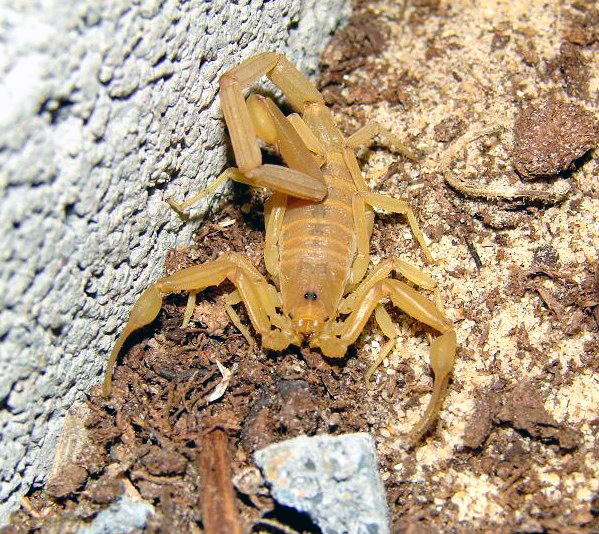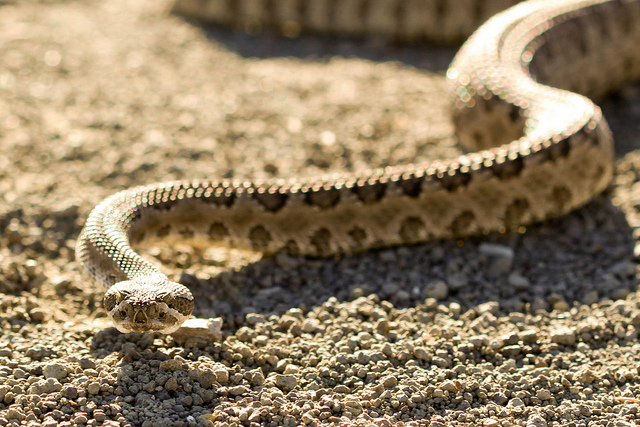Interactions
Prey
The Arizona Bark Scorpion is a feared predator by many invertebrates in the southwest U.S. and in northern Mexico. This scorpion will come out at night and hunt its prey by hiding and ambushing it. A quick strike with its venomous tail usually does the trick to either paralyze or kill the prey. Then it can grab the victimized prey with its claw-like pedipalps and eat.
Photo credit Matt Reinbold
Predators
This scorpion is eaten by birds, reptiles, and even some other invertebrates. Most people believe that scorpions go around looking to strike anything that moves with their venomous tails. In actuality, scorpions like to keep to themselves and will rarely attack with their stinging tails unless they are hunting for food or for self defense when running away is not an option.
Photo credit lacomj
Humans
If a human does get stung by C. sculpturatus, you might see these symptoms: Pain, numbness and tingling, irritability, slurred speech, trouble focusing, or random eye movements. The feeling of a sting is comparable to a jolt of electricity or a very intense bee sting. Stings from C. sculpturatus are generally only dangerous to children, the elderly, and people with poor immune systems. Allergic reactions may cause stings to be far worse.
Other Arizona Bark Scorpions
An odd trait of Centruroides sculpturatus is that this species will live in packs. During the winter months there has been found up to 40 of these scorpions nestled up with each other to wait out the cold, harsh conditions. This is very different than most other scorpion species, which mainly live alone.
View some awesome facts about C. sculpturatus!
Get back to the main page by clicking here!


